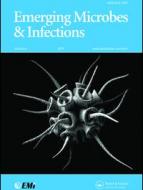Virulent infectious fungal diseases, impacting humans, animals, and plants across both natural and managed landscapes, have been on the rise over the past two decades. Fungal and fungal-like diseases have recently caused die-off and extinction events in many wild species and have become a threat to food security. A recent caving expedition in Yunnan Province, China, revealed two bat carcasses covered in fungal mycelia. Eleven fungal isolates were obtained from these bat carcasses, and morphological observations of the cultures and fungal structures and multigene phylogenetic analyses of ITS, LSU, TEF1, TUB2 and RPB2 revealed they were Fusarium incarnatum, Mucor hiemalis and Trichoderma harzianum as well as four new species (Mortierella rhinolophicola, M. multispora, M. yunnanensis and Neocosmospora pallidimors).
One of the more alarming findings is that a number of infections related to Neocosmospora, which has previously been associated with human and animal mycotoxicoses, are thought to be on the rise, and here we present a new species from this genus, isolated from a dead bat. Due to the ecosystem services provided by bats and the close relationship between bats and humans, future research will likely focus on the impacts and significance of this Neocosmospora pathogen to human and animal health, closely examining its pathogenicity and secondary metabolites. Taxonomic descriptions, color images of the habitat, in situ samples, microstructures and cultures are presented. SEM photographs of microstructures and phylogenetic trees showing the placement of new and known species are also provided.

